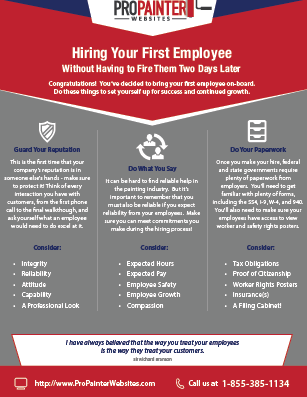Essential Seasonal Aspects Of Commercial Exterior Painting: What You Ought To Understand
Essential Seasonal Aspects Of Commercial Exterior Painting: What You Ought To Understand
Blog Article
Published By-Ford Decker
When you're preparing an industrial external painting project, seasonal factors can make or damage your results. You'll want to consider how temperature and humidity influence paint application and drying out times. Selecting the appropriate period can guarantee your paint sticks properly and lasts longer. But which seasons are truly the most effective for this kind of job? Let's explore the crucial elements that can influence your job's success.
The Effect of Temperature on Paint Application
When you're intending a business outside paint task, the temperature can dramatically influence just how well the paint sticks and dries.
Ideally, you intend to repaint when temperatures vary between 50 ° F and 85 ° F. If it's too cold, the paint might not cure appropriately, bring about problems like peeling or splitting.
On the other side, if it's too hot, the paint can dry too quickly, preventing appropriate attachment and causing an uneven surface.
You ought to additionally consider the moment of day; early morning or late afternoon uses cooler temperatures, which can be extra positive.
Constantly examine the manufacturer's suggestions for the certain paint you're utilizing, as they usually give advice on the excellent temperature range for optimum results.
Humidity and Its Effect on Drying Times
Temperature isn't the only ecological element that influences your industrial exterior painting project; moisture plays a substantial role as well. High humidity levels can reduce drying times significantly, impacting the total high quality of your paint task.
When the air is filled with wetness, the paint takes longer to treat, which can result in problems like bad attachment and a greater risk of mildew development. If impressions restaurant on a specifically moist day, be gotten ready for extensive delay times between coats.
It's critical to monitor neighborhood weather conditions and strategy as necessary. Ideally, https://www.sandiegouniontribune.com/lifestyle/home-and-garden/story/2023-04-15/watersmart-makeover-painting-with-natures-palette-in-oceanside for humidity degrees in between 40% and 70% for ideal drying out.
Keeping these consider mind ensures your job stays on track and supplies a lasting surface.
Best Seasons for Commercial Exterior Paint Projects
What's the best time of year for your business exterior painting jobs?
impressions group homes reviews and very early loss are typically your best bets. During these periods, temperature levels are mild, and humidity levels are often lower, creating ideal problems for paint application and drying.
Stay clear of summer's intense heat, which can trigger paint to dry also swiftly, resulting in inadequate adhesion and surface. Likewise, winter's chilly temperature levels can hinder correct drying and curing, risking the long life of your paint task.
Aim for days with temperatures between 50 ° F and 85 ° F for optimal outcomes. Remember to examine the local weather forecast for rain, as damp problems can ruin your job.
Planning around these elements guarantees your paint task runs smoothly and lasts longer.
Conclusion
To conclude, preparing your industrial exterior paint projects around seasonal factors to consider can make a considerable difference in the result. By organizing work during the suitable temperatures and humidity levels, you'll ensure better adhesion and drying times. Keep in mind to watch on regional weather report and pick the correct time of year-- spring and very early autumn are your best choices. Taking these steps will certainly assist you accomplish a durable and professional finish that lasts.
